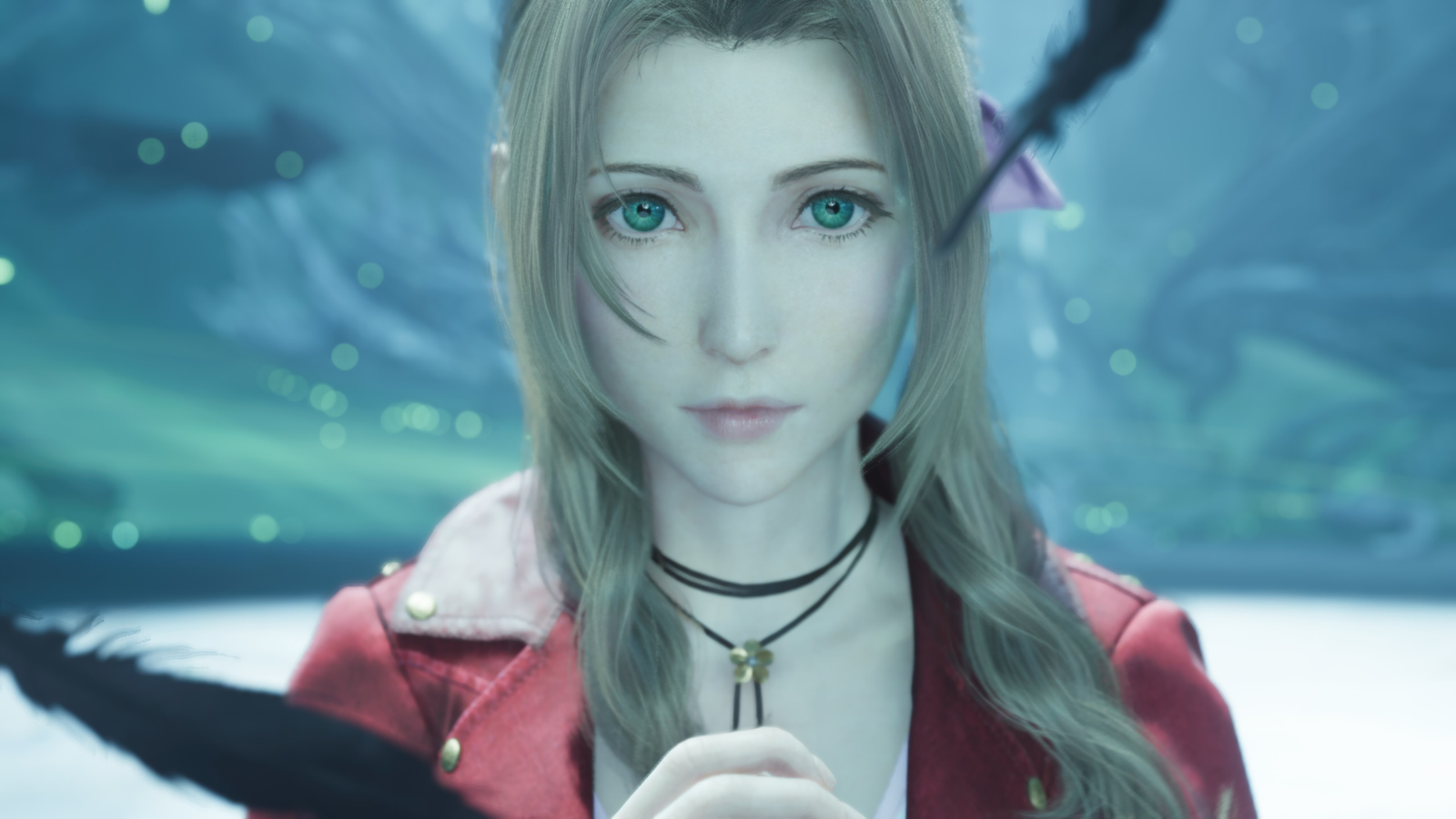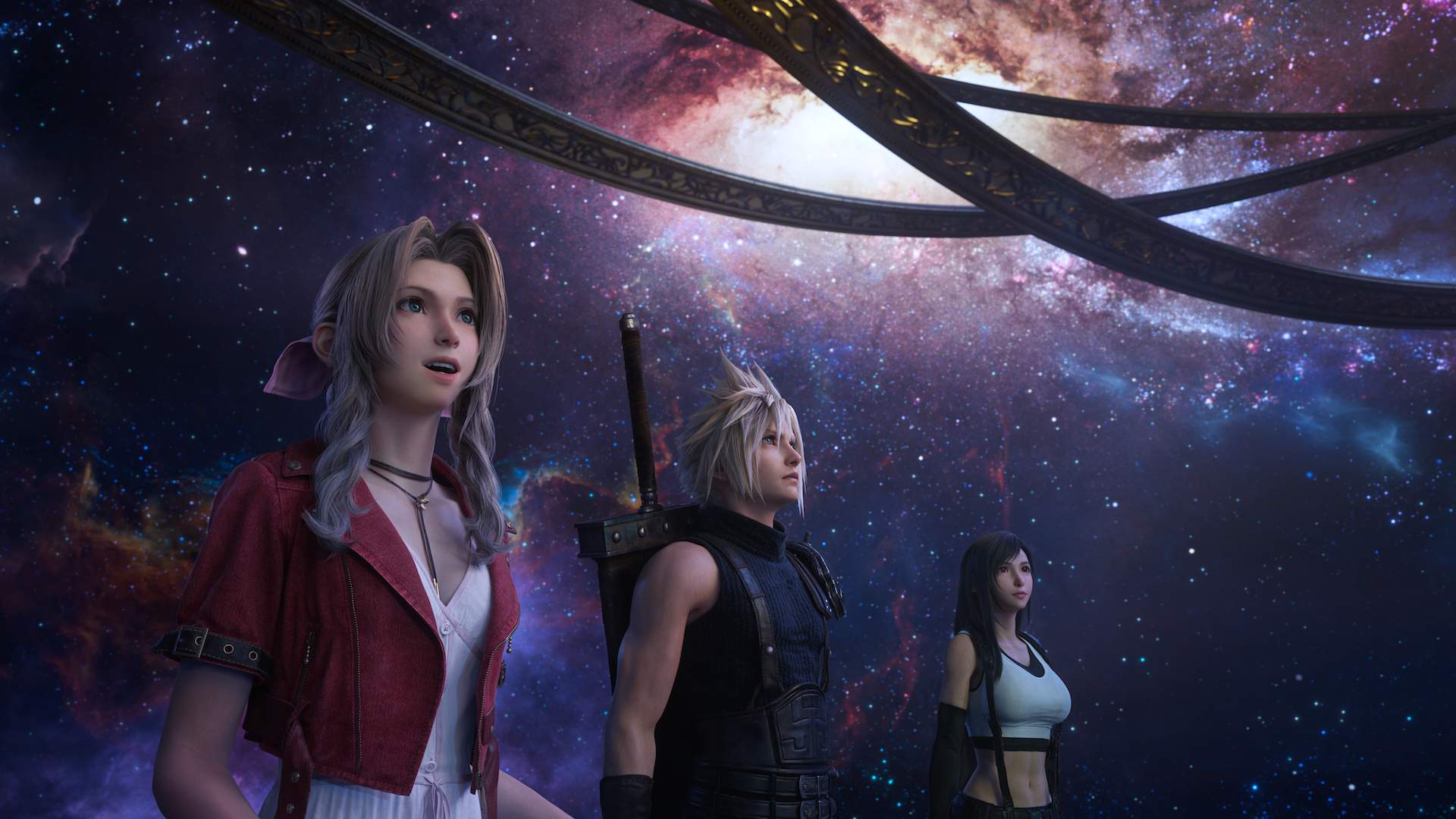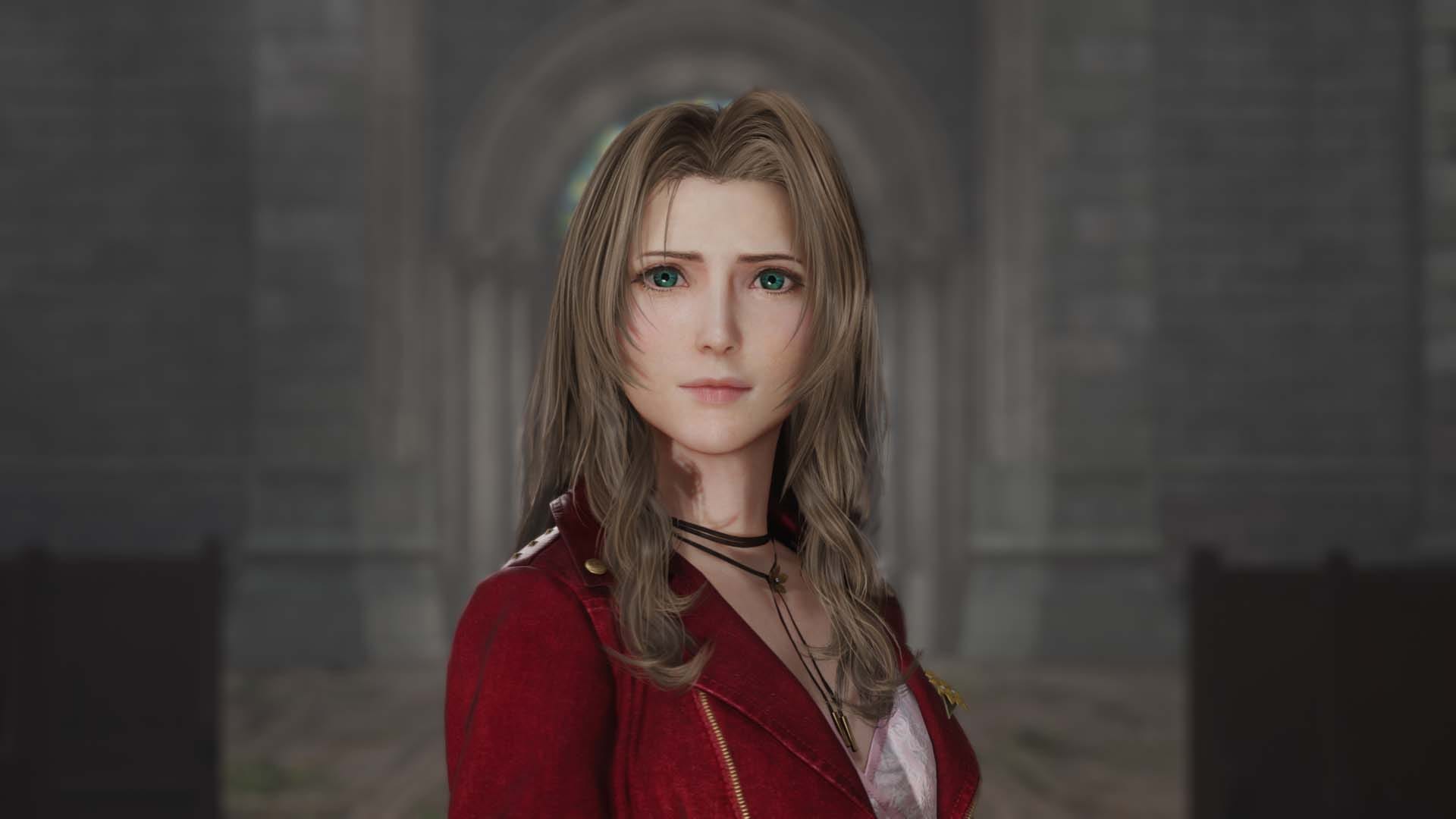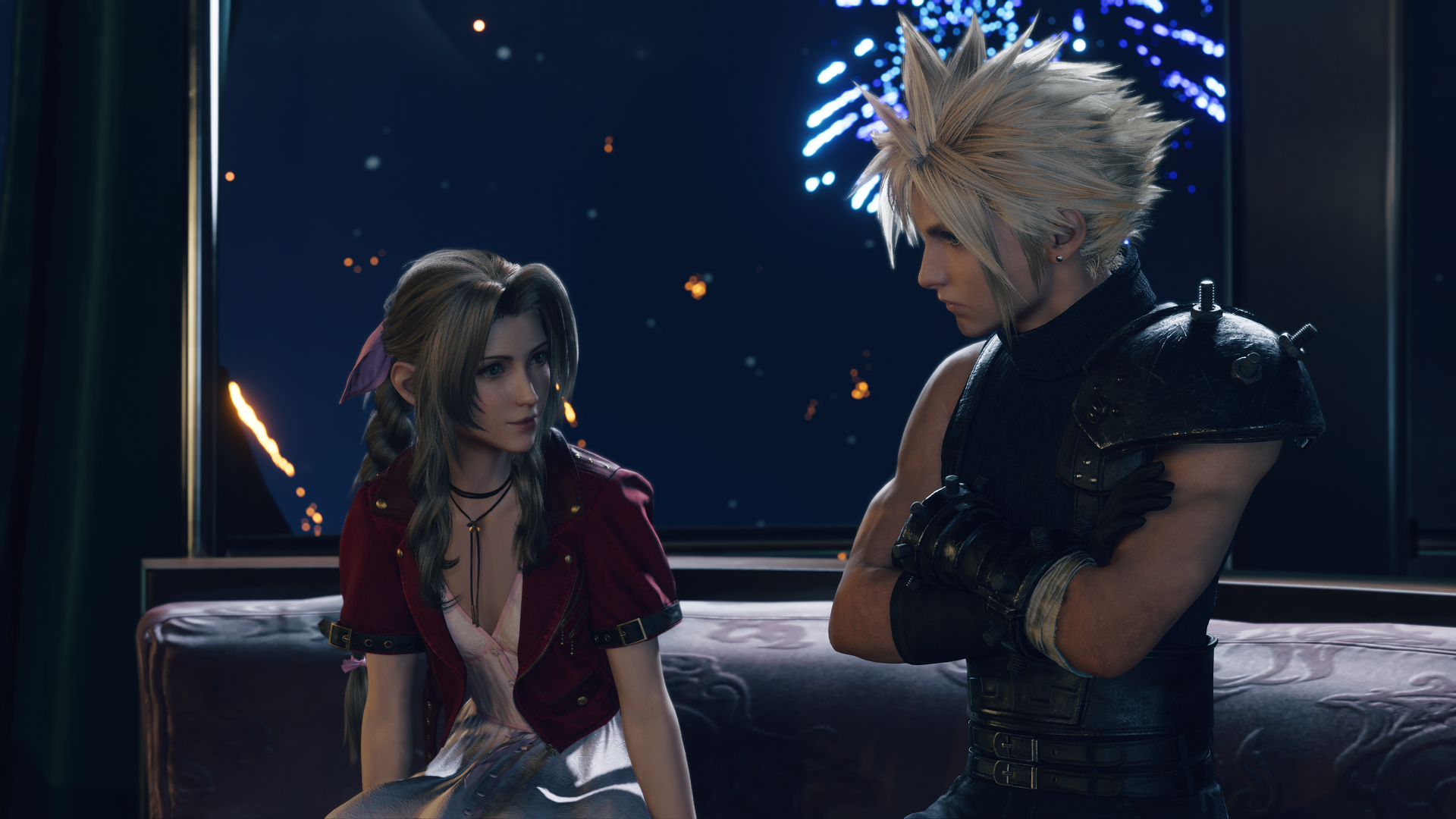The Quiet Genius of Final Fantasy VII Rebirth
Rebirth arrives with a brilliant take on "that" scene

One of the landmark titles of 2024, the team behind Final Fantasy VII Rebirth was saddled with the unenviable task of trying to recreate one of the founding fathers of the modern RPG and one of the most famous video games of all time. A follow-up to Final Fantasy VII Remake, this game sees the party emerging from the industrialised labyrinth of Midgar into the wider world, set free to explore and stop Sephiroth. This experience only covers a small portion of the greater Final Fantasy VII story, going all the way up until “that”.
If it wasn't clear already, I'll be discussing information about the original Final Fantasy VII, as well as every other game in the series up to the end of Rebirth. If you have interest in experiencing these games yourself without spoilers, turn back now!

By this time, there’s no need to be coy; this title is the one that has the pressure of recreating Aerith’s death. The tension of the Remake trilogy has largely pivoted around this key moment. It is a moment that has stuck in the minds of many and has left players feeling a sense of genuine grief. It has also been heralded as one of the events that helped to demonstrate video games as something more than just electronic beeps and flashing lights; it is a moment that demonstrated to a general audience the idea that video games can truly be art. The relationship between Cloud and Aerith is one that has transcended the video game space and, for many people, defined that space as well. Square Enix is fully aware of the titanic impact this moment carries.
We all knew it was coming. Exceptionally brief glimpses in trailers showed an all too familiar scene with Aerith praying and a black feather falling. As we continued to play hand after hand of the card game Queen’s Blood, I very much doubt that many players could tear themselves away from thinking about what lay at the end of the line for Cloud and company. As familiar scenes unfolded, would we see this scene reborn too?

We all knew it was coming.
The original Final Fantasy VII Remake posed the question of whether or not fate could be changed and attempted to analyse the philosophy behind the very idea of a “remake”. Characters were forced to grapple with the spectral Whispers as they essentially dictated the direction of the story. At the end of the 2020 game, we were left actually wondering whether or not Aerith would meet the same fate. Impressive, no doubt.
Similar to how Remake and the rest of Rebirth have done, the death of one of gaming’s most iconic heroines has been carefully restored in a way that respects the journey that we’ve all come on in the nearly 27 years since the original game. It might sound like the ending isn’t cut and dry, but that’s by design.
Just as we wonder now whether or not Aerith can be saved in the final entry of the Remake trilogy, players had this same hope in 1997. Playground rumours, faked screenshots, and hearsay were rampant during this era about the exact steps you could take in order to save Aerith. It was a magical era that brought us all together in the hope that we could save a character that hurt so much to lose. Just as we wanted to try and save Aerith, we now see Cloud in this same position.
On paper, the ending of Rebirth expands on the alternate timelines that were introduced at the end of Remake with the survival of Zack Fair, a fundamental paradox in the story of Final Fantasy VII. His death quite literally births the character of Cloud as we know him. These timelines are most clearly telegraphed by a shining, multi-coloured light and a change in the breed of the Shinra mascot, Stamp, who jumps between various dog breeds. We see various timelines in quick succession throughout the ending of the game, making us question what’s actually happening. On first viewing, it can be tough to track, but it all ties up neatly in the end.

Similar to how Remake and the rest of Rebirth have done, the death of one of gaming’s most iconic heroines has been carefully restored in a way that respects the journey that we’ve all come on in the nearly 27 years since the original game.
With this in mind - and Cloud’s previous track record of repressing vital information - the ending of Final Fantasy VII Rebirth adopts a new narrative for players to digest while awaiting the climax in Part 3. As Cloud walks up to the fateful shrine, we hear Aerith praying just as she did in the original game. We witness a scripted sequence of trigger presses to stop Cloud from doing the deed himself and fighting the influence of Sephiroth. Sephiroth descends as he had done previously with Cloud rising to meet his blade and push him away therefore saving Aerith. Players everywhere breathe a sigh of relief.
Until it isn’t. We return to the sword, now stuck in the ground. We see the camera go fuzzy as it has done in the past when Cloud misremembers something. We see Aerith’s blood trickling onto the floor, suggesting Sephiroth completed his gruesome task. What follows is a 45-minute-long supercut of moment after moment where we question what we’re actually seeing and what’s actually real. After the dust settles, we can see just how Cloud embodies us.
Similarly to how Cloud has forgotten the true role of Zack and what he actually did during the Nibelheim incident, Cloud’s own vision has become “clouded” and he believes that Aerith is alive in some form. While everyone else mourns her loss at the altar, Cloud has conversations with someone who simply isn’t there for everyone else, as his mind has become unstuck. In light of how much turmoil Cloud has gone through – especially throughout the duology so far with the emphasised influence of Sephiroth – this is an incredibly tough scene to watch as Cloud can’t see the truth and in turn, denies the grief of the rest of the party.
In the final ending of the game, we see the party trying to repair Cid’s airship in preparation for the rest of their journey while taking time to mourn their losses. We see Aerith in these scenes; so close, yet so far. She is superimposed onto the scene as only Nanaki manages to even sense her presence in a fleeting moment. In Cloud’s mind, she’s just as alive as she ever was. We see them talk, and promise to stop Sephiroth’s plans once and for all, with a sombre goodbye.

Players everywhere breathe a sigh of relief.
Just as so many of us denied the death of Aerith so many years ago, Cloud now does the very same thing. While Tifa, Yuffie, and Nanaki all mourn the loss of a dear ally, Cloud remains inappropriately aloof in the wake of the event as he asks ‘Aerith’ if she’s ‘gonna be okay getting back’. Cloud also has visions of a ghostly scar in the sky, not dissimilar to previously in the game. The nature of this vision remains unclear, with the mental state of Cloud similarly in question.
While this ending might not be as cut and dry as people might want, I do think this ending is a stroke of genius that pays homage to the very community that has granted this moment such cultural weight. Deaths in video games have rarely ascended to the status of Aerith’s, and the impact on the community as a whole is something that cannot be replicated.
And so instead of doing that, Square Enix has paid homage to that original experience and allowed us to see ourselves in Cloud, giving us a new perspective on a feeling we have all become familiar with over our extended time with Final Fantasy VII. While it’s impossible to predict what might happen in Part 3, this ending leaves us with a thoughtful and poignant new vision for one of gaming’s most treasured characters; a vision that avoids a loud climax and instead allows us to sit and think about what might be.

By no means do I believe that this is the ‘correct’ way to view this ending, and I’m sure there’s a logical explanation that can explain this away in an instant. But on initial viewing, I could appreciate the effort that Square Enix has put into respecting one of their most important characters – a character that helped them to ascend to the name that they are today. The Remake trilogy is ambitious, and I have a feeling that there are more big revelations to come.
